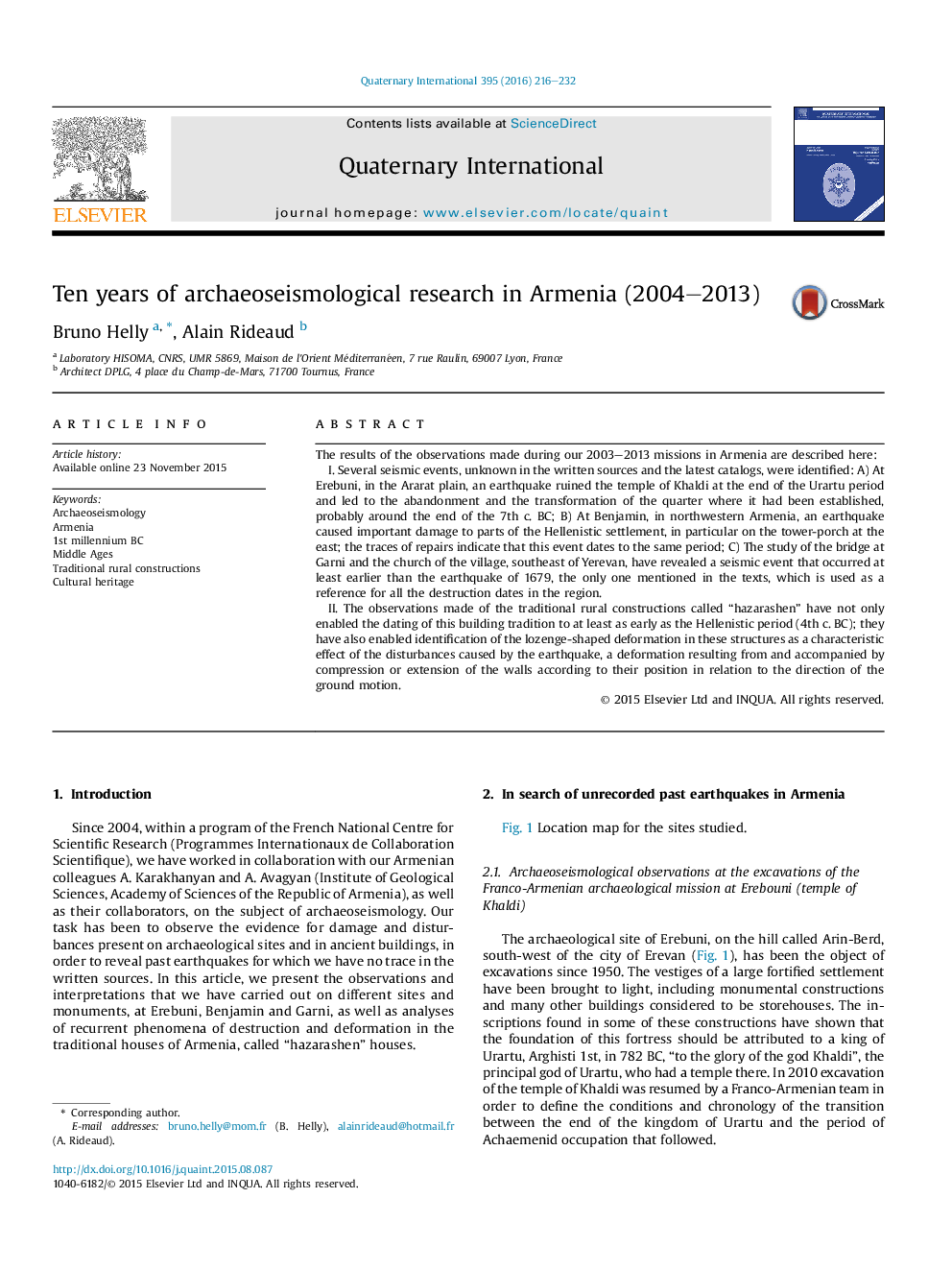| کد مقاله | کد نشریه | سال انتشار | مقاله انگلیسی | نسخه تمام متن |
|---|---|---|---|---|
| 1040355 | 1484103 | 2016 | 17 صفحه PDF | دانلود رایگان |

The results of the observations made during our 2003–2013 missions in Armenia are described here:I. Several seismic events, unknown in the written sources and the latest catalogs, were identified: A) At Erebuni, in the Ararat plain, an earthquake ruined the temple of Khaldi at the end of the Urartu period and led to the abandonment and the transformation of the quarter where it had been established, probably around the end of the 7th c. BC; B) At Benjamin, in northwestern Armenia, an earthquake caused important damage to parts of the Hellenistic settlement, in particular on the tower-porch at the east; the traces of repairs indicate that this event dates to the same period; C) The study of the bridge at Garni and the church of the village, southeast of Yerevan, have revealed a seismic event that occurred at least earlier than the earthquake of 1679, the only one mentioned in the texts, which is used as a reference for all the destruction dates in the region.II. The observations made of the traditional rural constructions called “hazarashen” have not only enabled the dating of this building tradition to at least as early as the Hellenistic period (4th c. BC); they have also enabled identification of the lozenge-shaped deformation in these structures as a characteristic effect of the disturbances caused by the earthquake, a deformation resulting from and accompanied by compression or extension of the walls according to their position in relation to the direction of the ground motion.
Journal: Quaternary International - Volume 395, 22 February 2016, Pages 216–232